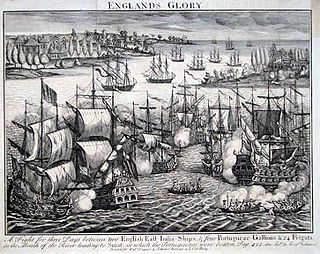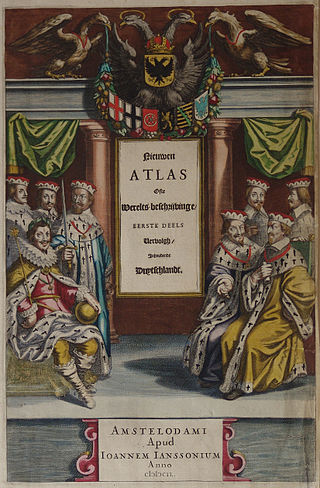
| |||
|---|---|---|---|
| +... | |||
| 1612 in science |
|---|
| Fields |
| Technology |
| Social sciences |
| Paleontology |
| Extraterrestrial environment |
| Terrestrial environment |
| Other/related |
The year 1612 in science and technology involved some significant events.

| |||
|---|---|---|---|
| +... | |||
| 1612 in science |
|---|
| Fields |
| Technology |
| Social sciences |
| Paleontology |
| Extraterrestrial environment |
| Terrestrial environment |
| Other/related |
The year 1612 in science and technology involved some significant events.
February 25 is the 56th day of the year in the Gregorian calendar; 309 days remain until the end of the year.
February 11 is the 42nd day of the year in the Gregorian calendar; 323 days remain until the end of the year.

1612 (MDCXII) was a leap year starting on Sunday of the Gregorian calendar and a leap year starting on Wednesday of the Julian calendar, the 1612th year of the Common Era (CE) and Anno Domini (AD) designations, the 612th year of the 2nd millennium, the 12th year of the 17th century, and the 3rd year of the 1610s decade. As of the start of 1612, the Gregorian calendar was 10 days ahead of the Julian calendar, which remained in localized use until 1923.

The Andromeda Galaxy is a barred spiral galaxy and is the nearest major galaxy to the Milky Way. It was originally named the Andromeda Nebula and is cataloged as Messier 31, M31, and NGC 224. Andromeda has a D25 isophotal diameter of about 46.56 kiloparsecs (152,000 light-years) and is approximately 765 kpc (2.5 million light-years) from Earth. The galaxy's name stems from the area of Earth's sky in which it appears, the constellation of Andromeda, which itself is named after the princess who was the wife of Perseus in Greek mythology.

Andromeda is one of the 48 constellations listed by the 2nd-century Greco-Roman astronomer Ptolemy, and one of the 88 modern constellations. Located in the northern celestial hemisphere, it is named for Andromeda, daughter of Cassiopeia, in the Greek myth, who was chained to a rock to be eaten by the sea monster Cetus. Andromeda is most prominent during autumn evenings in the Northern Hemisphere, along with several other constellations named for characters in the Perseus myth. Because of its northern declination, Andromeda is visible only north of 40° south latitude; for observers farther south, it lies below the horizon. It is one of the largest constellations, with an area of 722 square degrees. This is over 1,400 times the size of the full moon, 55% of the size of the largest constellation, Hydra, and over 10 times the size of the smallest constellation, Crux.

Johannes Janssonius was a Dutch cartographer and publisher who lived and worked in Amsterdam in the 17th century.
This article contains information about the literary events and publications of 1718.
This article contains information about the literary events and publications of 1612.
The year 1670 in science and technology involved some significant events.

John Gerard was an English herbalist with a large garden in Holborn, now part of London. His 1,484-page illustrated Herball, or Generall Historie of Plantes, first published in 1597, became a popular gardening and herbal book in English in the 17th century. Except for some added plants from his own garden and from North America, Gerard's Herbal is largely a plagiarised English translation of Rembert Dodoens's 1554 herbal, itself highly popular in Dutch, Latin, French and other English translations. Gerard's Herball drawings of plants and the printer's woodcuts are mainly derived from Continental European sources, but there is an original title page with a copperplate engraving by William Rogers. Two decades after Gerard's death, the book was corrected and expanded to about 1,700 pages.

Sir John Harington, of Kelston, Somerset, England, but born in London, was an English courtier, author and translator popularly known as the inventor of the flush toilet. He became prominent at Queen Elizabeth I's court, and was known as her "saucy Godson", but his poetry and other writings caused him to fall in and out of favour with the Queen. He was the author of the description of a flush-toilet forerunner installed in his Kelston house, appearing in A New Discourse of a Stale Subject, called the Metamorphosis of Ajax (1596), a political allegory and coded attack on the monarchy which is nowadays his best-known work.

Jodocus Hondius was a Flemish and Dutch engraver and cartographer. He is sometimes called Jodocus Hondius the Elder to distinguish him from his son Jodocus Hondius II. Hondius is best known for his early maps of the New World and Europe, for re-establishing the reputation of the work of Gerard Mercator, and for his portraits of Francis Drake. He inherited and republished the plates of Mercator, thus reviving his legacy, also making sure to include independent revisions to his work. One of the notable figures in the Golden Age of Dutch cartography, he helped establish Amsterdam as the center of cartography in Europe in the 17th century.

The Milky Way is the galaxy that includes the Solar System, with the name describing the galaxy's appearance from Earth: a hazy band of light seen in the night sky formed from stars that cannot be individually distinguished by the naked eye.

Santorio Santorio whose real name was Santorio Santori better known in English as Sanctorius of Padua was an Italian physiologist, physician, and professor, who introduced the quantitative approach into the life sciences and is considered the father of experimental physiology. He is also known as the inventor of several medical devices. His work De Statica Medicina, written in 1614, saw many publications and influenced generations of physicians.

A thermoscope is a device that shows changes in temperature. A typical design is a tube in which a liquid rises and falls as the temperature changes. The modern thermometer gradually evolved from it with the addition of a scale in the early 17th century and standardisation throughout the 17th and 18th centuries.

Abraham "Avi" Loeb is an Israeli and American theoretical physicist who works on astrophysics and cosmology. Loeb is the Frank B. Baird Jr. Professor of Science at Harvard University, where since 2007 he has been Director of the Institute for Theory and Computation at the Center for Astrophysics. He chaired the Department of Astronomy from 2011 to 2020, and founded the Black Hole Initiative in 2016.
The year 1545 in science and technology involved some significant events.
The year 1563 in science and technology included a number of events, some of which are listed here.

Donatiello I, also known as Mirach's Goblin, is a dwarf spheroidal galaxy in the constellation Andromeda, located between 8.1 and 11.4 million light-years from Earth. It is a possible satellite galaxy of the dwarf lenticular galaxy NGC 404, "Mirach's Ghost", which is situated 60 arcminutes away. It is otherwise one of the most isolated dwarf spheroidal galaxies known, being separated from NGC 404 by around 211,000 light-years. The galaxy is named after its discoverer, amateur astronomer and astrophotographer Giuseppe Donatiello, who sighted the galaxy in a 2016 review of his archival long exposures from 2010 and 2013. Follow-up observations with the Roque de los Muchachos Observatory led to a scientific paper on its discovery being published in December 2018.

Jacomina Hondius was a Flemish and Dutch calligrapher notable for being the first female European calligrapher to have signed examples of her work published.